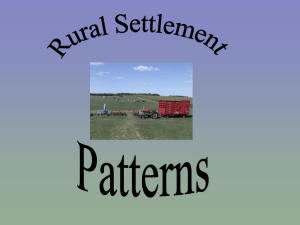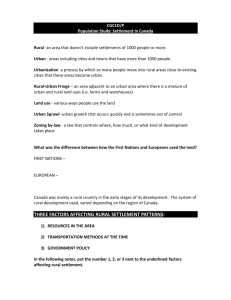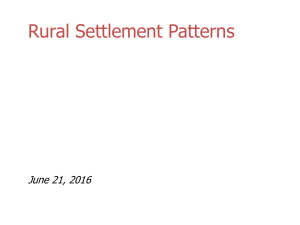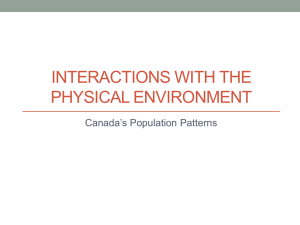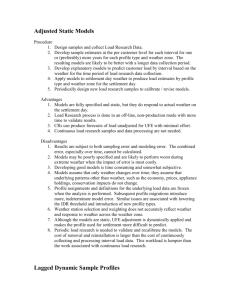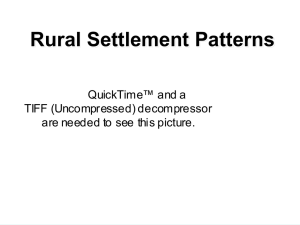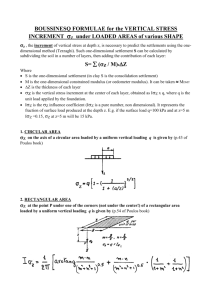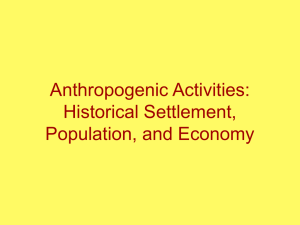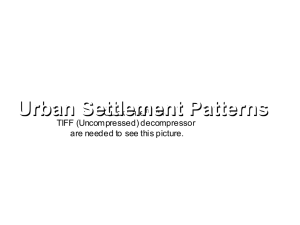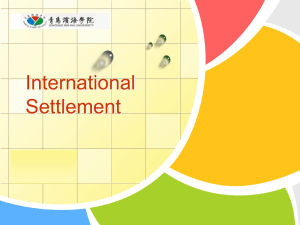here - Crescent School
advertisement
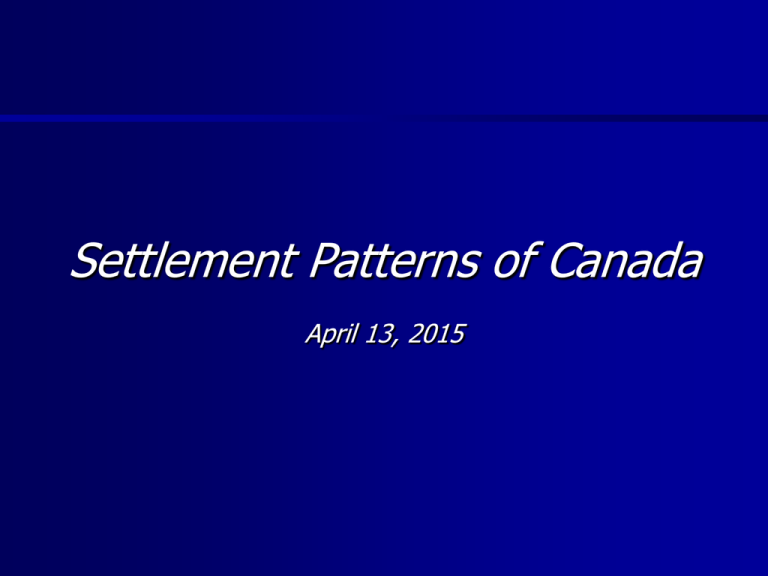
Settlement Patterns of Canada April 13, 2015 What to know Objectives: Difference between population distribution and population density Rural Settlement Patterns ESRI Canada - GIS in Education Influences of Settlement FACTORS THAT INFLUENCE RURAL SETTLEMENT › What kind of resources are found? › The kind of resources that attract people in the first place. Ie. agriculture in southern Ontario develops a different settlement pattern then the forestry resource in the Canadian Shield › What were the transportation methods at the time? › Before 1800 settlement was based on transportation by water. Settled areas tend to be next to rivers and lakes. Areas settled after 1800 were increasingly based on road and eventually rail. › What role did government policy play in the settlement? › Some areas had a lot of government input into the process of settlement. They would control which land would be settled, size, shape of farms, pattern of roads, location of towns, schools, churches. A set of rules that control these things is called the SURVEY SYSTEM Rural Settlement 1 The long lot system of southern Quebec 2 The concession system of southern Ontario 3 The section system of the Prairies Most of Canada’s Rural residents live in one of two ecozones: The Mixedwood Plain OR the Prairie 1. The long lot of southern Quebec INFLUENCES: • Resource: agriculture • Transportation: St. Lawrence River • Government Policy: Each settler receives a piece of land along the waterfront. Taxes increase with increased waterfront. • See Figure 19-3 on page 228. Long thin farms built along the river, hence, the term “long lot system ” or Seigniorial System 1. The long lot of southern Quebec 2. Concession System of Southern Ontario INFLUENCES: • Resources: agriculture • Transportation: started at the lake, but there were roads, later railway (access to water less important, each settlement needed access to a road. • Government policy: survey system already in place Concession System: started survey at a Great Lake, called BASELINE, Concession parrallel to lake, sideroad perpendicular roads 2km apart, farms 40 to 80 ha in size. Concession blocks Townships Counties See Fig. 19-4 on page 229 and explanation of how to navigate in these areas. 2. Concession System of Southern Ontario 3. Section system of the southern Prairies INFLUENCES: • Resources: agriculture • Transportation: roads, later railway (access to water less important) • Government policy: surveyed before major settlement occurred, used the section system. They did not want the U.S to have the land! BUT the lots were too small. Families needed large lots for a larger harvest. • Started survey at the Canada/US border (49th latitude) • Township (9.6 x 9.6 km OR 6 x 6 miles) 36 sections (1 mile x 1 mile) Quarter Sections (64 ha) • See Fig. 19-5 on page 230 and explain the system in your own words. 3. Section system of the southern Prairies 4. Other rural scattered settlements INFLUENCES: 1 Resource - based settlement: ie. Atlantic and Pacific Maritime ecozones = fishing OR Montane Cordillera = mining/energy 2 Service - based Settlement: ie. along transportation routes, people work in hotels, gas stations or restaurants. Compare and contrast the different Rural Settlement Patterns we have discussed. See page 230. Work on page 230: # 3, 4, 5, 6, 8 Winnipeg – A Transportation Centre Sudbury - Nickel The End!
